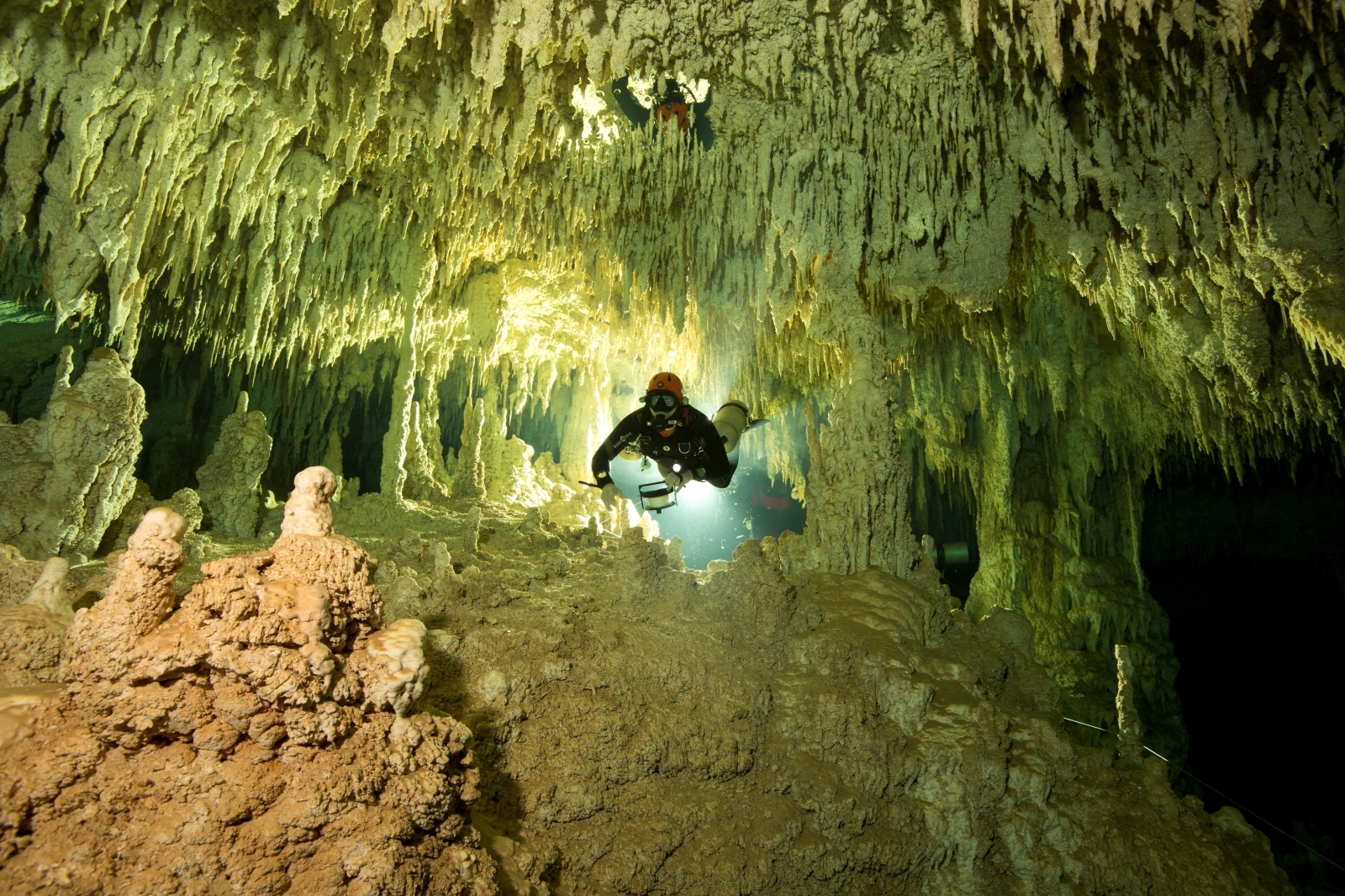World's biggest ever underwater cave filled with ancient Mayan artefacts has just been discovered
The massive underwater cave is filled with over 100 ancient artefacts, including Mayan ceramics and graves.
Archaeologists have discovered the biggest ever underwater cave, measuring around 347 kms, in Mexico. Filled with ancient artefacts, the extensive underwater tunnel network may help researchers uncover more about Mayan culture.
The over 10,000-year-old submerged cave actually connects two of Earth's largest flooded tunnel networks – Sac Actun and Dos Ojos in Tulum, Quintana Roo – making the merged cave the largest ever found. The newly merged cave is now known as the Sac Actun system as the bigger cave absorbs the smaller one.
The new discovery, which took over 10 months of underwater exploration, is the work of a team of researchers from Mexico's National Anthropology and History Institute (INAH) and the Great Maya Aquifer Project (GAM).
"This is an effort of more than 20 years, to travel hundreds of kilometres of caves submerged in Quintana Roo mainly, of which I dedicated 14 years to explore this monstrous Sac Actun System; now everyone's job is to keep it," says Robert Schmittner, the German researcher and lead of the GAM exploration team, said in a statement.
"We came really close a few times," Schmittner told the local newspaper El Pais, Telesur reported. "On a couple of occasions, we were a meter from making a connection between the two large cave systems."
"It was like trying to follow the veins within a body," Schmittner added. "It was a labyrinth of paths that sometimes came together and sometimes separated. We had to be very careful."
The massive network of limestone caves reportedly contains almost perfectly preserved artefacts such as ancient Mayan ceramic vases. A treasure trove of ancient flora and fauna remains, including human skulls, as well as the remains of giant sloths, tigers and extinct plant species was also found well-preserved in the cave.
"This immense cave represents the most important archaeological site in the world, as it has more than a hundred archaeological contexts, among which are evidence of the first settlers of America, as well as extinct fauna and, of course, the Mayan culture," says Guillermo de Anda, researcher at INAH and director of GAM.
"We've recorded more than 100 archaeological elements: the remains of extinct fauna, early humans, Mayan archaeology, ceramics and Mayan graves. It's also very significant that this discovery enables us to see the possible patterns of past settlement. From the Pleistocene through to the ancient Mayans and up to the colonial era, they developed parallel to this enormous flooded fresh-water cave," de Anda said, the Mexico News Daily reported.






The discovery also helped researchers find another independent 18 km-long tunnel, located north of the Sac Actun system, which is known as the "Mother of all cenotes". Cenotes reportedly played a primary role in Mayan culture and religion.
Quoting de Anda, Telesur reported that cenotes are "a very powerful, magical space where the supernatural reigned, where gods and goddesses lived, where the good and bad co-existed, where man came from".
The researchers are now close to connecting the "Mother of all cenotes" to the Sac Actun. "It's a tunnel of time that transports you to a place 10,000 to 12,000 years ago," de Anda said.
Researchers now hope to analyse the water quality of the massive cave and study its biodiversity.






















